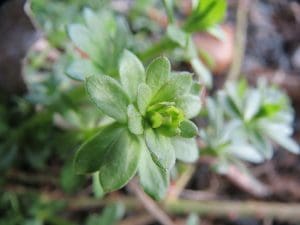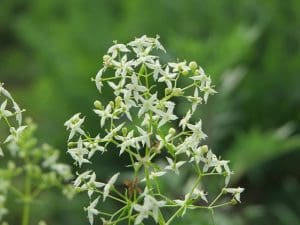Hedge Bedstraw / Spring / Summer / Edible
Hedge Bedstraw is a fairly common, hedgerow plant, it’s related to cleavers and coffee.
Common Names
Hedge bedstraw, False baby’s breath,
Botanical Name
Galium mollugo
Scientific Classification
Kingdom – Plantae
Order – Gentianales
Family – Rubiaceae
Physical Characteristics for Hedge Bedstraw
Stems
The hairless stems have a square cross section. The stems can reach 1.5 metres in length.
Leaves
The small leaves are elliptical with a sharp point and they grow in whorls of 6-8 around the stem.

Flowers
The individual flowers are tiny up to 5mm across, they have 4 whitish petals each with a pointed tip. They normally flower between June and September.

Habitat
Hedgerows and fields, they prefer alkaline soils.
Known Hazards
None Known
Could be Confused with…
They do look very similar to Cleavers (Galium aparine) but Hedge Bedstraw lacks those sticky hairs.
Edible Uses
The taste is quite mild I use the young tips in salads, they do get bitter the older they are.
The seed can also be roasted and used as a coffee alternative in a similar way of Cleaver seeds.
Notes on Herbal Uses
Traditionally the fresh juice was used to treat epilepsy. But there’s not much evidence that it is useful.
Infusions made from the leaves are used to treat, thyroid conditions, kidney diseases and prostrate issues.
Extra notes from the Foragers
The name Bedstraw comes from their traditional use as a bedding material, as the plant dries it has a pleasant smell, which would deter insects, some suggest that Hedge Bedstraw was used to line Jesus’ cradle.
You can make a red dye out of the roots of this plant and it’s believed if you eat enough of the roots it will dye your bones red.
References:
https://pfaf.org/user/Plant.aspx?LatinName=Galium+mollugo
https://en.wikipedia.org/wiki/Galium_mollugo








Leave a Reply
You must be logged in to post a comment.